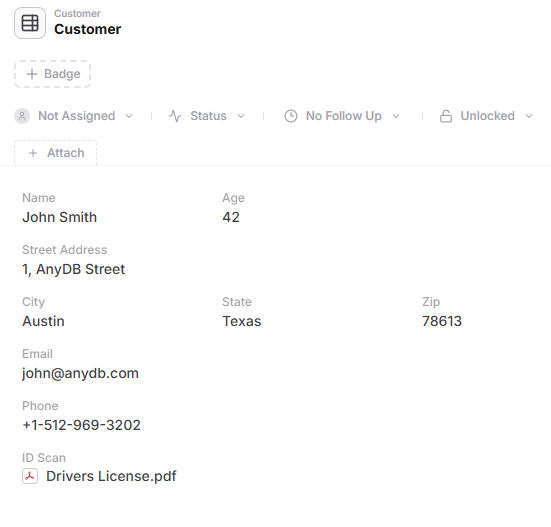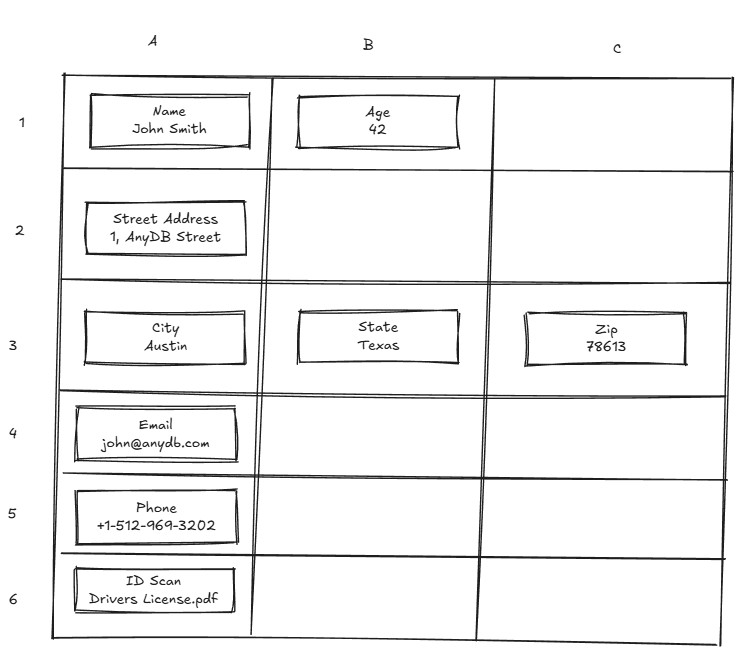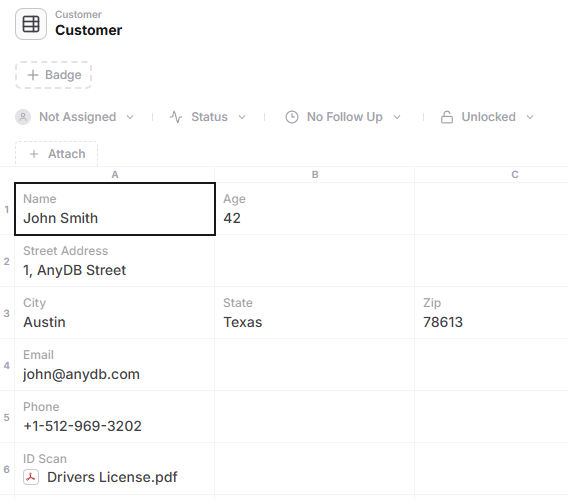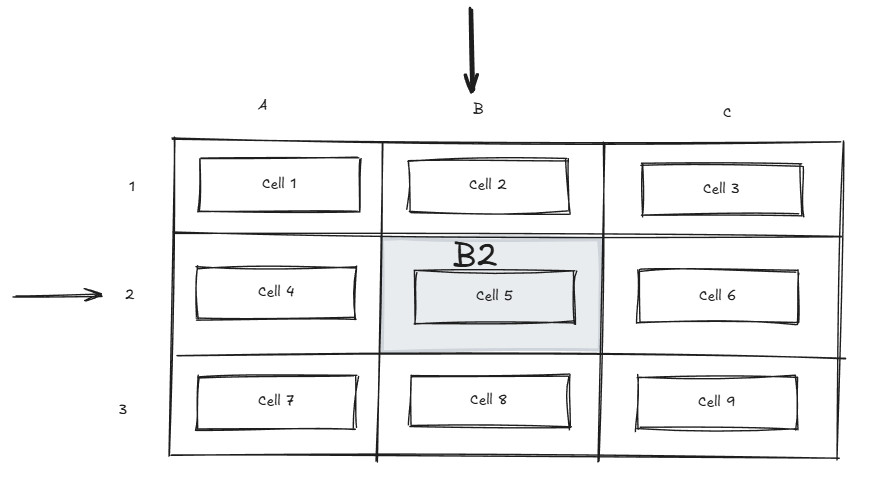What is a Data Document?
A data document is the core building block in AnyDB. It contains structured data fields and represents a single business entity or record.
Data Documents are
- are extremely powerful and allow you to connect one data document with another data document
- are designed to be flexible, allowing you to capture and manage various types of information
Consider a business record like a customer profile. It includes various fields such as:
- Name
- Phone Number
- Address
- Personal ID
- Age
It can be represented as a data document in AnyDB as follows:

Here's an actual example of a customer profile data document in AnyDB:

Spreadsheet-Like Interface
Data documents are presented in a grid layout, familiar to anyone who’s used a spreadsheet. This makes it easy to:
- Input and edit data quickly
- Navigate using keyboard shortcuts
- Apply conditional formatting
- View linked relationships
That example customer profile can be visualized in a spreadsheet-like format with each cell representing a field and its value.

Here's an actual example of a customer profile data document as a grid in AnyDB:

Note:
While AnyDB looks like a spreadsheet, it’s built for structured data and business processes and many excel compatible formulas—not for complex calculations, very large data sets, pivot tables, or scripting.
AnyDB Cells & Grid Positioning
What is an AnyDB Cell?
An AnyDB cell is the smallest unit of data inside a data document.
Each cell has:
- A label (e.g., "Email", "Amount", "Due Date")
- A value (the actual data)
- A grid position (e.g., B2)

How AnyDB Cells Differ from Spreadsheet Cells
| Feature | AnyDB Cell | Spreadsheet Cell |
|---|---|---|
| Named Fields | ✅ Yes | ❌ No |
| Data Types | ✅ Text, dropdowns, files, links, images, etc. | ✅ Mostly text, numbers, and formulas |
| Relational Links | ✅ Can link to other data documents | ❌ Typically flat and isolated |